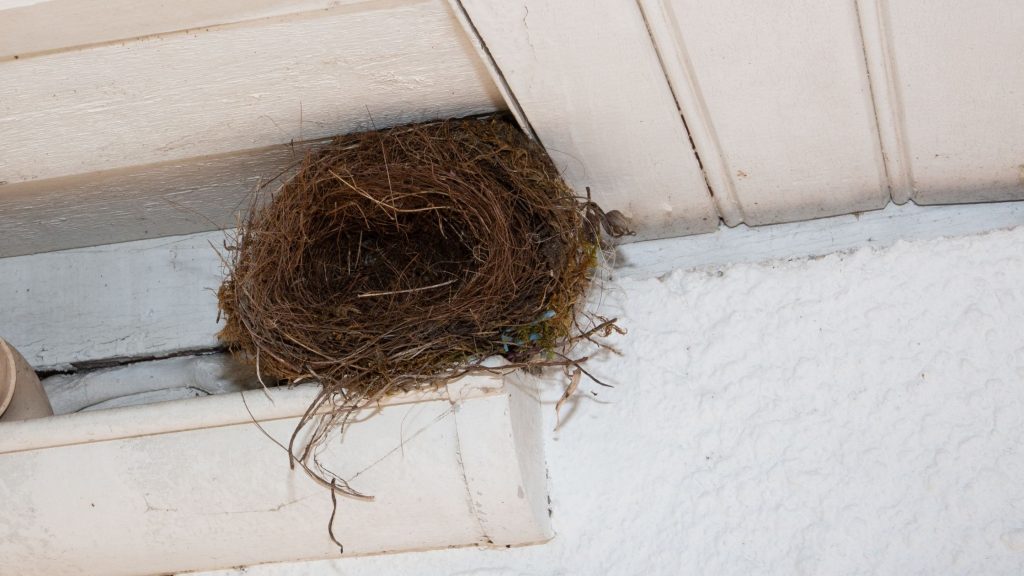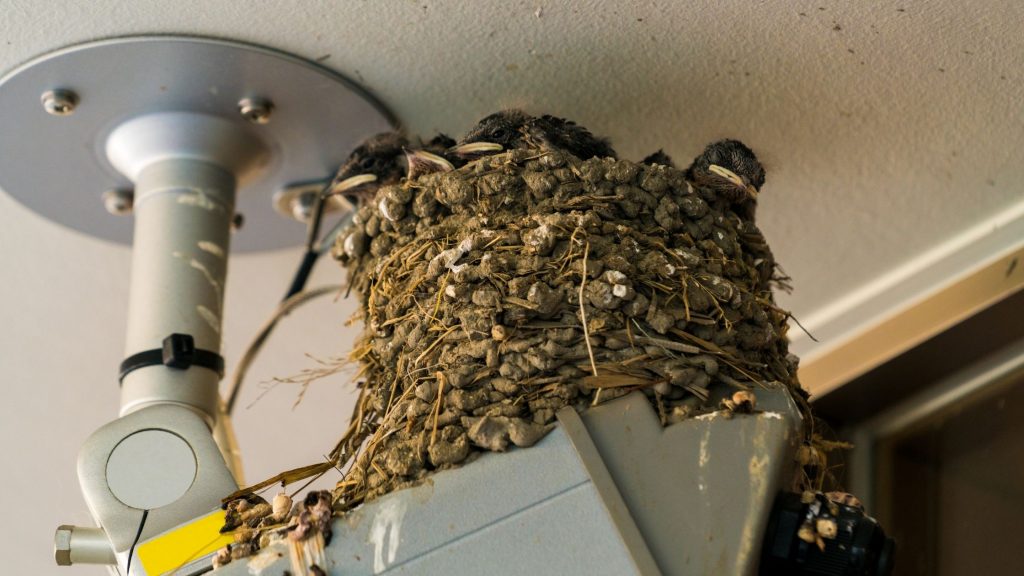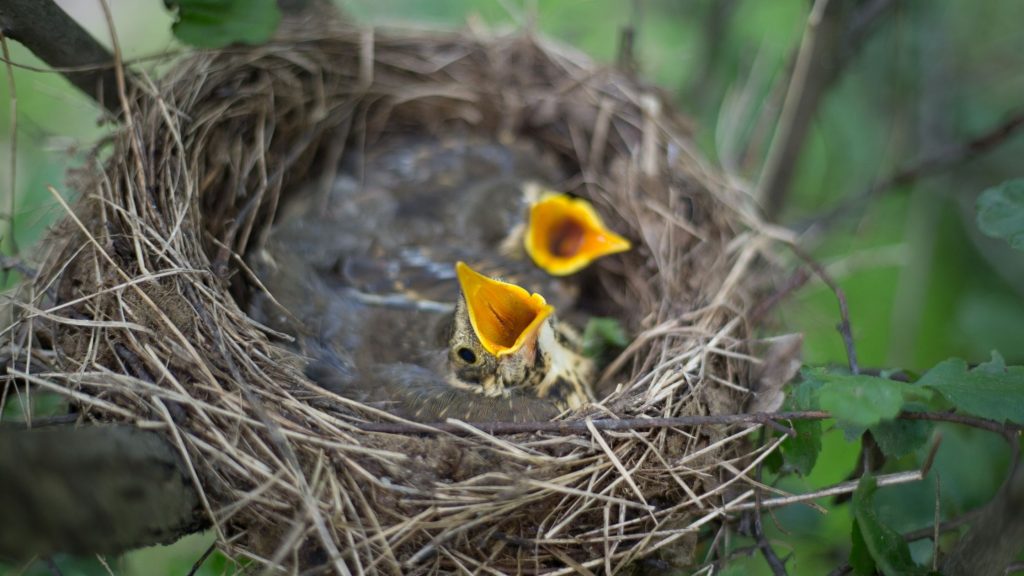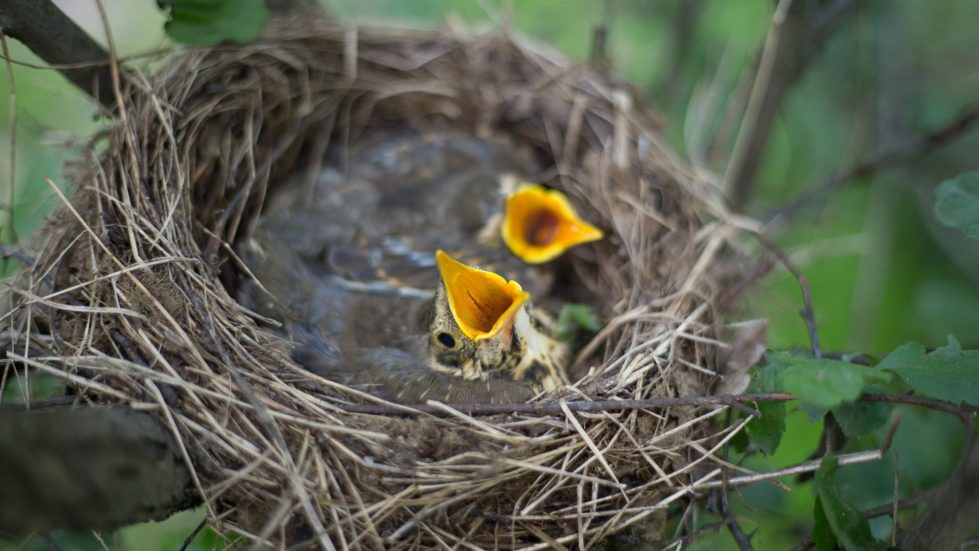With spring comes the return of birds! Here are some important Bird Nest Removal Do’s and Don’ts from the experts.
From songbirds to sparrows, starlings, and everything in between, not all birds are welcome at a home. If birds are causing damage to your roof, house, vents, attic, car, or property, you may be using the term “pest” or “nuisance” to describe them right now! You may even want to consider removing the nests of birds if you find them frequently wreaking havoc. Before you do, there is a delicate list of dos and don’ts for bird nest removal.

Nesting birds not only make a lot of noise, but they can also obstruct dryer, stove, and fan vents with their nesting materials, and clog gutters and drains as a result of their activity. uric acid, which is found in bird droppings, has been shown to cause paint damage on automobiles.
So, even if you’ve never given much thought to removing a bird’s nest, there may come a time when you need to take a closer look. Make sure you’re aware of all applicable laws and risks before attempting to remove a bird’s nest on your own.

The Migratory Bird Treaty Act and Bird Control
Bird control is more complicated than simply removing a bird’s nest. There are many different species of birds that are protected by the Migratory Bird Treaty Act. This act states that “it is illegal for anyone to take or possess any migratory bird or the parts of a nest or eggs of a migratory bird except under the terms of a valid permit issued pursuant to Federal regulations,” which includes many different species of birds. For this reason, it is always best to leave the removal of bird nests to an expert in bird control and or wildlife control rather than trying to tell which birds are protected from which others unless you are an expert yourself.
An additional reason for hiring a professional bird removal service is that birds can carry pathogens that are harmful to humans. There are many ways in which microorganisms from birds can spread, and they can cause a wide range of diseases. While the birds may have left their nests, they may have left behind a trail of disease-carrying insects like mites, parasites, ticks, and other pests. Nests may contain feces, which increases the risk of handling them.
How to Safely Remove a Bird’s Nest
The purpose of a bird’s nest is to provide a warm and safe place for the female bird to lay her eggs. Many environmental factors, including the species of the bird, the presence of competitors, parasites, and predators, temperature, and humidity, influence the location and type of nest a bird chooses to build. Some birds nest in trees and shrubs, while others choose to settle on the ground or dig burrows. Others build their homes on ledges, walls, attics, and roofs of buildings.
Before attempting to remove a bird nest, consider these factors, no matter where you’ve seen them or how much damage they’ve done to your property. The best first step is often to call in a wildlife professional to help you out.

Make sure the nest is not occupied. In order to get rid of a bird’s nest, it’s obvious that the best time is while it’s still being built. The construction may go unnoticed until it is already occupied, however. If birds or eggs are already in the area, do not try to move them. If you’re planning on taking down a migratory bird nest, you should know that it is against the law to do so before the nesting season is over. In addition, it’s a good idea to learn how to prevent birds from building a nest in vents or soffits.
Make sure there aren’t any eggs present. It’s possible to find eggs in the nest, but the parents are nowhere to be found. This does not imply that the eggs have been left behind. In fact, many birds do not incubate for up to two weeks after egg laying because the eggs are still viable. Likewise, the parents may have taken a short break from caring for the eggs in order to eat or keep them from overheating. The nest may be abandoned if it is frequently disturbed by humans.
Wait until after the nesting season has passed before making any changes. Most species of birds only lay one egg per year, but some can lay four or five. The length of time each species spends in the nest varies greatly as well. Raptors, on the other hand, may remain for up to eight or ten weeks before songbirds are ready to depart. It can be difficult to know what to do and when if you don’t know the specifics of each species.
Wildlife experts should be contacted if a bird has taken up residence on your property in an unsafe location, is causing damage to your home, or is preventing you from using space. To stop birds from building nests, or if you simply want to learn how to remove an existing nest, our experienced technicians can help you determine the best course of action, whether with bird netting, deterrents or other safe methods of bird control and bird exclusion.
Have a bird problem? Give us a call or contact us today!

